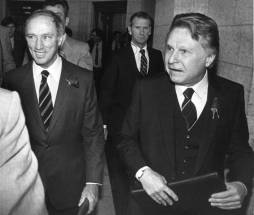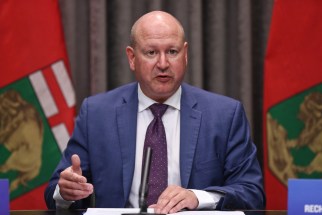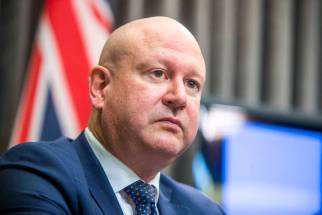Budget 2022: Flush from booming economy, Feds eye growth with $31B in new spending
Read this article for free:
or
Already have an account? Log in here »
To continue reading, please subscribe:
Monthly Digital Subscription
$0 for the first 4 weeks*
- Enjoy unlimited reading on winnipegfreepress.com
- Read the E-Edition, our digital replica newspaper
- Access News Break, our award-winning app
- Play interactive puzzles
*No charge for 4 weeks then price increases to the regular rate of $19.00 plus GST every four weeks. Offer available to new and qualified returning subscribers only. Cancel any time.
Monthly Digital Subscription
$4.75/week*
- Enjoy unlimited reading on winnipegfreepress.com
- Read the E-Edition, our digital replica newspaper
- Access News Break, our award-winning app
- Play interactive puzzles
*Billed as $19 plus GST every four weeks. Cancel any time.
To continue reading, please subscribe:
Add Free Press access to your Brandon Sun subscription for only an additional
$1 for the first 4 weeks*
*Your next subscription payment will increase by $1.00 and you will be charged $16.99 plus GST for four weeks. After four weeks, your payment will increase to $23.99 plus GST every four weeks.
Read unlimited articles for free today:
or
Already have an account? Log in here »
Hey there, time traveller!
This article was published 07/04/2022 (1340 days ago), so information in it may no longer be current.
OTTAWA – The federal Liberals have more than $85 billion in new spending room from a booming economic rebound and plan to spend some of the windfall on a series of measures aimed at keeping the good growth going.
The 2022 budget released Thursday includes more than $31 billion in net new spending over the next five years that is targeted at speeding the flow of goods through the country’s supply chains, boosting housing supply and jolting businesses out of an anemic period of investment.
Budget 2022: Highlights of the Liberal plan
OTTAWA – Finance Minister Chrystia Freeland tabled the 2022 federal budget on Thursday. Here are some of the highlights:
• $452.3 billion in new spending on projected revenue of $408.4 billion for a deficit of $52.8 billion. The debt to GDP ratio is pegged at 45.1 per cent.
OTTAWA – Finance Minister Chrystia Freeland tabled the 2022 federal budget on Thursday. Here are some of the highlights:
• $452.3 billion in new spending on projected revenue of $408.4 billion for a deficit of $52.8 billion. The debt to GDP ratio is pegged at 45.1 per cent.
• $4 billion over the next five years to launch a new fund in the Canada Housing and Mortgage Corporation to help cities and municipalities create more affordable housing, and $1.5 billion over two years to the CMHC’s Rapid Housing Initiative to create 6,000 new affordable housing units with at least one-quarter of the funding dedicated to women-focused projects.
• $625 million over four years, starting in 2023-24, for child care, to help the provinces and territories build new facilities and make new investments. The new funding is a followup to the various federal child-care agreements with the provinces and territories after they raised concerns that non-profit and public providers were facing soaring real estate and building material costs.
• $1 billion over five years, starting in 2022-23, to create an independent federal innovation and investment agency. The measure is designed to spur economic growth and address the fact that Canada is ranked last in the G7 in spending on research and development by business.
• The defence budget got new money with more than $8 billion pledged over five years to better equip the Canadian Armed Forces, reinforce cybersecurity and support a culture of change. The budget contained no road map on whether this would be enough to boost Canada’s defence spending to the NATO target of two per cent of GDP, as the alliance works to bolster Europe following the Russian invasion of Ukraine.
• Up to $1 billion in new loan resources for the Ukrainian government through the International Monetary Fund to help keep its embattled government operating.
• $4 billion over six years, starting in 2021-22, to remove systemic barriers to First Nations children receiving services in health, education and social services. The funds are part of the government’s commitment to Jordan’s Principle, which started in 2016.
• $5.3 billion over five years starting in 2022-23 and $1.7 billion ongoing to Health Canada to provide dental care to Canadians as a result of the Liberal-NDP agreement. The plan will start with children under 12 in 2022 at an initial cost of $300 million.
• $1.7 billion over five years starting in 2022-23 to help make zero-emission vehicles more affordable for people. The Canadian Infrastructure Bank will spend $500 million over five years to build infrastructure to support the 1,500 charging stations that the government has promised to build throughout Canada.
• $547 million over four years starting in 2022-23 to help businesses upgrade their fleets to zero-emission vehicles.
This report by The Canadian Press was first published April 7, 2022.
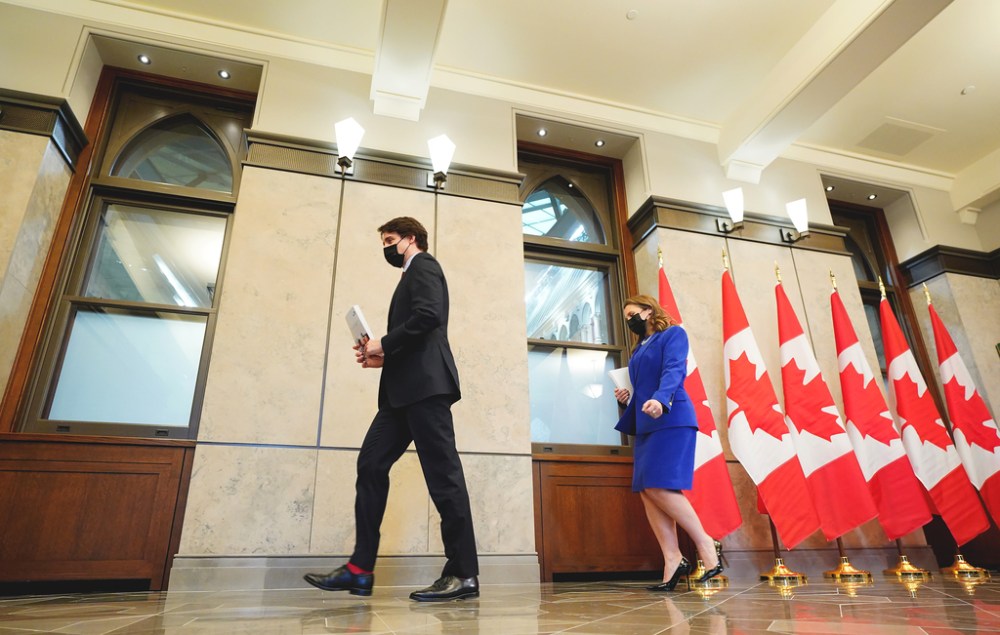
The new spending has increased the fiscal year’s deficit to $52.8 billion from earlier estimates of $44.1 billion.
Finance Minister Chrystia Freeland framed the spending as a hedge against near-term economic uncertainty created by Russia’s unprovoked invasion of Ukraine and the sixth wave of the COVID-19 pandemic.
But she said the spending is aimed at the long-term as well to address structural issues within the national economy that could hold back growth.
“Canadians understand that post-COVID, our country needs a growth strategy,” Freeland said in an afternoon press conference ahead of the budget’s release.
“We need to pay down our COVID debts and in a very uncertain 21st century Canada really needs an economic plan that is going to allow us to increase our productivity to increase our economic growth.”
It’s why the government is reprofiling $15 billion in existing spending for a new fund designed to lower business investment risk for research and new technologies, $3.8 billion over eight years for a critical minerals strategy, and $450 million over five years to unclog supply chains.
Dennis Darby, president of Canadian Manufacturers and Exporters, said the budget offered help to stimulate innovation and ease supply chain issues, but it fails to address labour shortages: “This is a miss.”
The document also commits to spending money from budgets past by forcing provinces to allocate nearly $7.3 billion in outstanding infrastructure dollars by next March or risk losing the money. Timelines to spend the money have also been pushed back from 2027 to 2033.
Overall, the budget points to a government admitting there are hurdles to Canada’s long-term growth prospects, though falls short of a detailed economic strategy, said Robert Asselin, senior vice-president policy with the Business Council of Canada.
“They are admitting at least that stuff they have been doing is not working. That’s a great start,” he said. “But I think to their own admission, they’re still not sure on where to go next.”
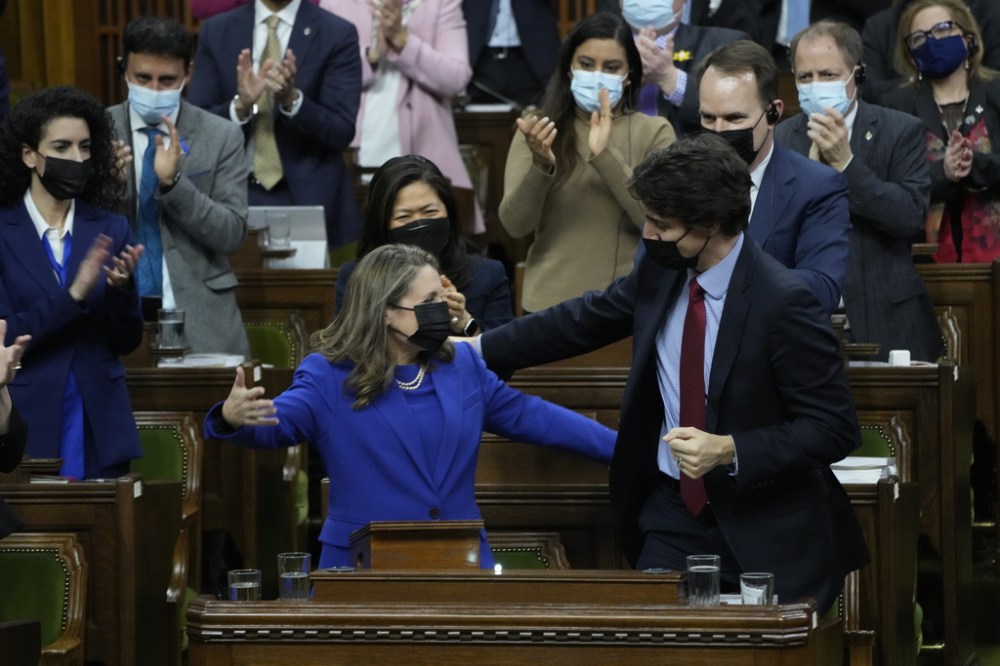
The budget forecasts 3.9 per cent economic growth this year but expects that to slow over the ensuing four years to average 2.9 per cent annual growth in real gross domestic product.
Inflation too is expected to fall from 3.9 per cent this year – an upward revision to December’s fiscal update – before starting next year to fall toward the Bank of Canada’s target of two per cent. The hot pace of price increases was something the government kept in mind while crafting the budget, Freeland said.
Unemployment is expected to stay at a low of 5.5 per cent over the forecast horizon.
Economist Armine Yalnizyan, an Atkinson Fellow on the Future of Workers, said the budget was a missed opportunity invest in health-care workers, for example, to keep workers from leaving the care economy that accounts for one-fifth of GDP, and which other workers rely on.
“You can build the middle class of the next century,” she said. “But only if you decide you’re going to make every job a good job, and make sure there are people there to do that work.”
Total spending is this fiscal year will decline to $452.3 billion, including debt servicing costs, from the $497.9 billion in the preceding 12-month period as emergency pandemic aid measures end.
The Canadian Federation of Independent Business was disappointed that support for small firms was coming to an end, and the Canadian Chamber of Commerce noted the absence of debt relief for businesses could undermine the government’s growth plans.
The budget forecasts the debt as a percentage of the economy will hit 45.1 per cent this year and decline over the coming years, including in a worst-case scenario envisioned in the document.
Randall Bartlett, senior director of Canadian economics at Desjardins, said the government has put some of its financial windfall into the bank for a rainy day given the uncertain environment, and held back on moving ahead with a handful of election promises in this budget.
“There will be some people who aren’t happy ultimately with the budget, I think, as a result, and maybe not understanding why they put that windfall aside, but I think it’s the prudent thing to do,” he said.
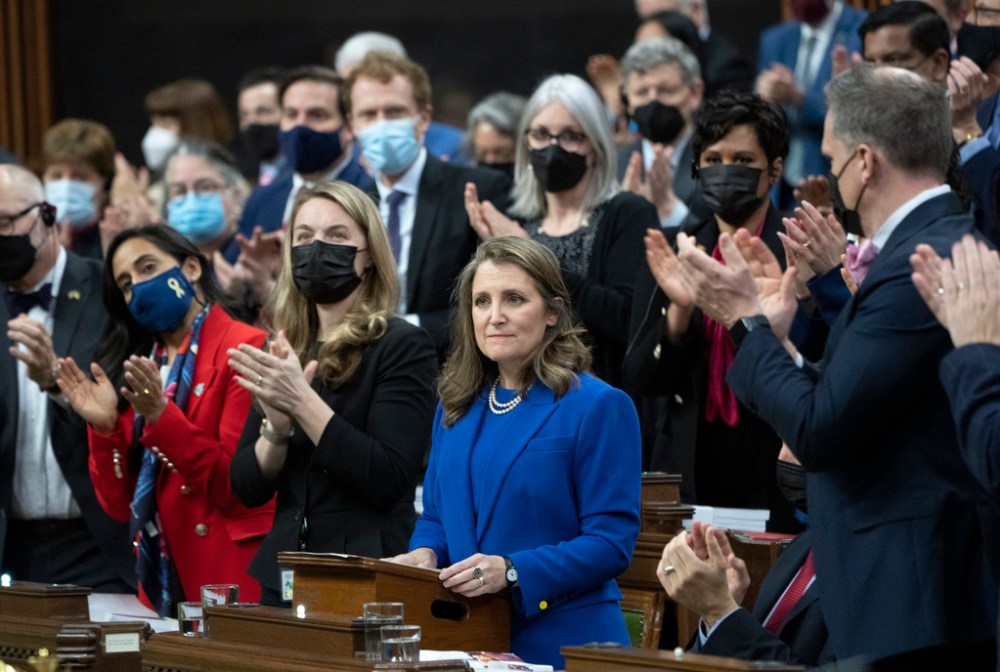
Missing from the spending outlook are measures like pharmacare promised as part of the Liberals’ deal with the NDP, nor did the document pump out the full suite of Liberal campaign pledges.
Freeland said more spending would come, calling this the first of four budgets the Liberals expect to deliver before the next federal election, which could happen in 2025 if the NDP prop up the government until then.
“Yes, we will do more things over the next three budgets,” she said. “We will, however, do those additional things, fulfill those further promises within an absolutely responsible fiscal framework.”
To pay for some of the new spending, the government is rolling out a tax on excess profits at banks and insurance companies that the Finance Department expects to reel in $6.1 billion over five years. There is also a warning shot to the country’s top earners that the government plans to change their minimum tax with details later this year.
The Liberals are also promising a spending review to find $6 billion in savings over five years. A progress report is promised for next year’s budget.
This report by The Canadian Press was first published April 7, 2022.
















